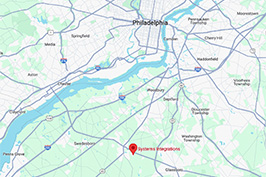Understanding NDAA vs Non-NDAA Compliant Surveillance Cameras: A Guide for Businesses
In today’s security-conscious world, surveillance cameras are indispensable for businesses. However, when selecting these devices, it’s crucial to understand the difference between NDAA and non-NDAA-compliant cameras. This distinction has significant implications for privacy, security, and legal compliance.
What is NDAA Compliance?
The National Defense Authorization Act (NDAA) is a series of United States federal laws specifying the budget, expenditures, and policies of the U.S. Department of Defense. For surveillance cameras, Section 889 of the 2019 NDAA is particularly relevant. It prohibits the U.S. government from purchasing video and telecommunication equipment from certain Chinese companies deemed security risks, such as Huawei and ZTE. This ban extends to any surveillance cameras made by these companies or containing their components.
NDAA vs Non-NDAA Compliant Cameras
- Manufacturing Origin: NDAA-compliant cameras are not manufactured by companies banned under the NDAA. Non-NDAA cameras might be produced by these companies, posing potential security risks.
- Security Risks: NDAA-compliant cameras are considered more secure, as they are less likely to have backdoors or vulnerabilities that could be exploited by foreign governments or hackers.
- Legal Implications: Using non-NDAA-compliant cameras could lead to legal issues, especially if your business works with the government or in sensitive industries.
- Firmware and Software Integrity: NDAA-compliant cameras are more likely to receive regular firmware updates and support, ensuring better protection against cyber threats.
Why Should Businesses Care?
- Security Assurance: NDAA-compliant cameras offer greater assurance that your surveillance system is free from hidden vulnerabilities that could be exploited.
- Compliance and Legal Safety: For businesses contracting with the government, compliance with NDAA is a legal requirement. Non-compliance could result in lost contracts or legal penalties.
- Future-Proofing: As cybersecurity threats evolve, using NDAA-compliant cameras ensures your system remains up-to-date with the latest security protocols.
- Brand Reputation: Demonstrating compliance with legal standards like the NDAA can enhance your business’s reputation for taking security seriously.
- Network Safety: Non-NDAA-compliant cameras could be a weak link in your network, potentially allowing access to sensitive business data.
Choosing NDAA-compliant surveillance cameras is more than a compliance issue; it’s about ensuring the security and integrity of your business’s surveillance system. While non-NDAA cameras might be cheaper, the risks they pose in terms of security, legal compliance, and network integrity are significant. In an era where data breaches and cyber threats are increasingly common, opting for NDAA-compliant cameras is a wise investment in your business’s security and reputation. To safeguard your business with the right surveillance technology, contact Systems Integrations today. Our team of experts is dedicated to providing solutions that not only meet legal standards but also enhance your overall security posture.
Non Compliant
- Dahua
- Hikvision
- Huawei
- IC Realtime
- LTS
Compliant
- 360 Vision Technology (360 VTL)
- Axis
- BCD International
- Bosch*
- Commend
- FLIR
- Geutebrück
- Hanwha
- i-Pro
- JCI/Tyco Security
- Mobotix
- Motorola Solutions’ Avigilon/Pelco/Ava
- Oncam
- Opgal
- Rhombus Systems
- Seneca
- Solink
- Verkada
- Vicon
- Vivotek
*These companies said that products available in the US are compliant, but some others not sold elsewhere in the world are not.
Partially Compliant
- Clinton Electronics
- Costar Technologies/Arecont
- Digital Watchdog
- Eagle Eye
- Evolv
- Honeywell
- IDIS
- Lilin
- March Networks
- Speco
- Uniview





